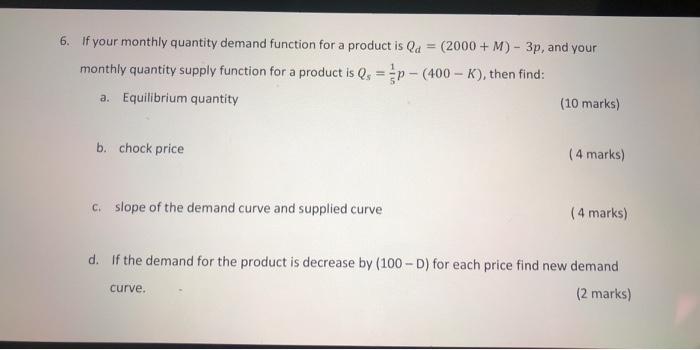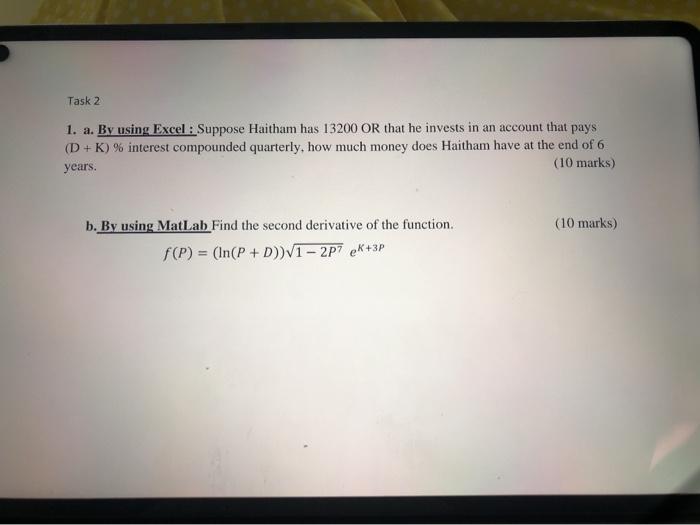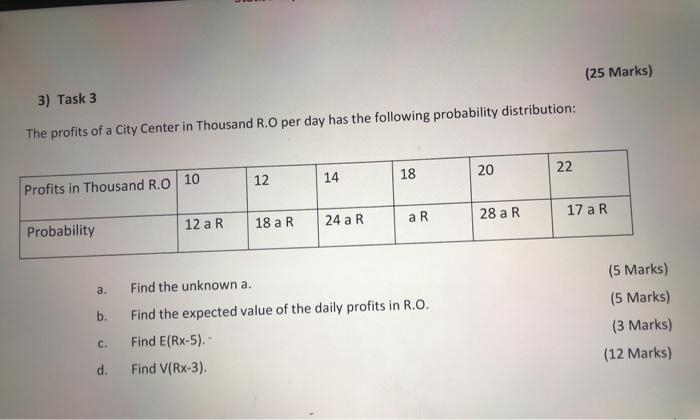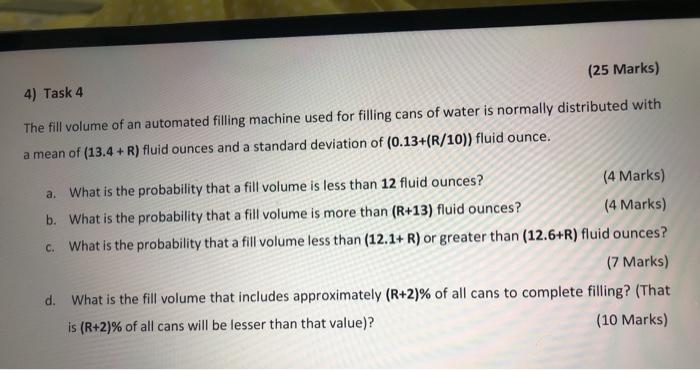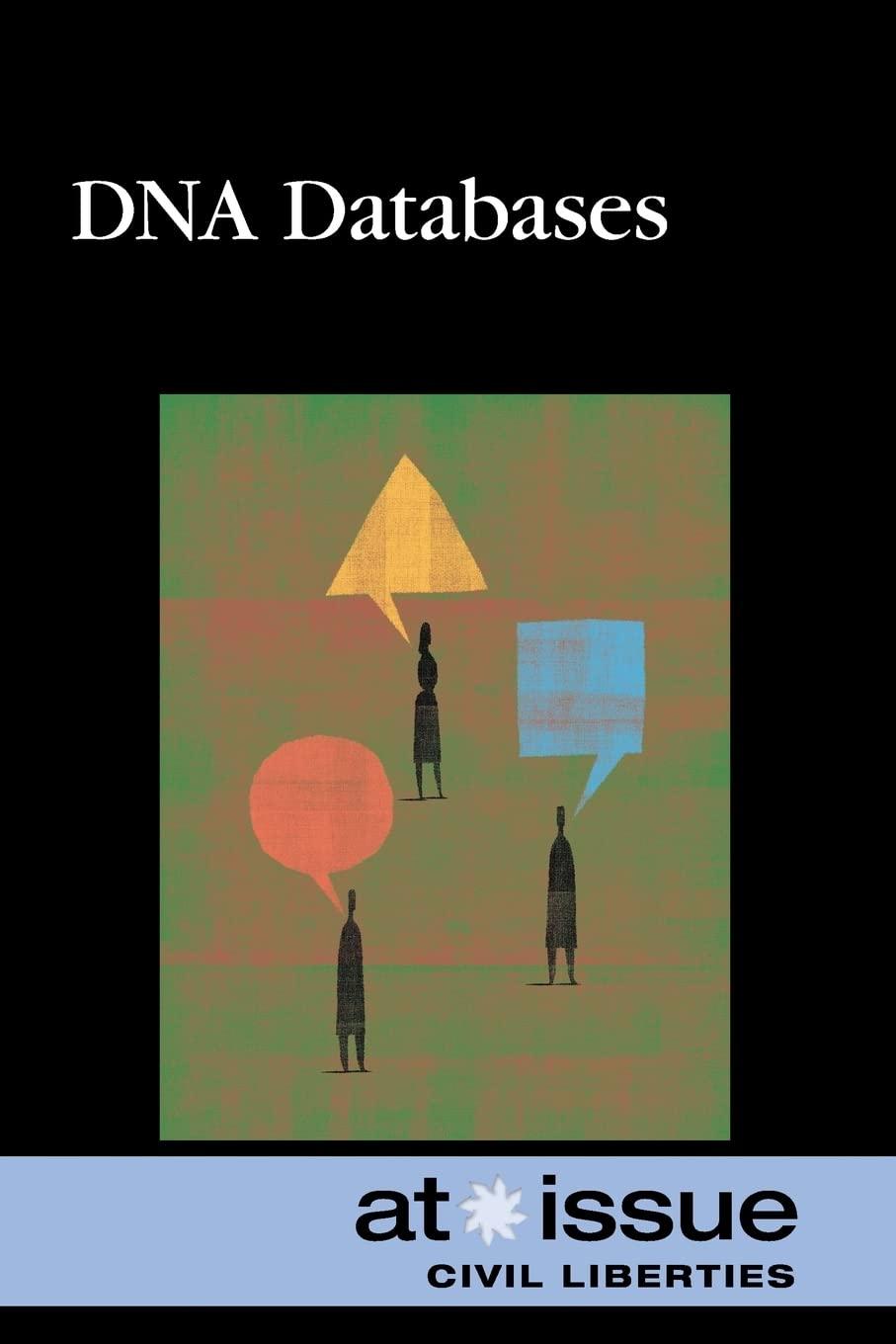6. If your monthly quantity demand function for a product is Qd = (2000+ M) - 3p, and your monthly quantity supply function for a product is Qs = p - (400 - K), then find: a. Equilibrium quantity (10 marks) b. chock price (4 marks) C. slope of the demand curve and supplied curve (4 marks) d. If the demand for the product is decrease by (100-D) for each price find new demand (2 marks) curve. Task 2 1. a. By using Excel : Suppose Haitham has 13200 OR that he invests in an account that pays (D+K) % interest compounded quarterly, how much money does Haitham have at the end of 6 years. (10 marks) (10 marks) b. By using MatLab Find the second derivative of the function. (P) = (In(P + D))V1 - 2P? eX+3P 4. A saving account opened (5+M) months ago now has a balance of 7500 RO. If the bank pays (K+49% simple interest, how much money was deposit? (10 marks) 5. At what annual rate of interest, compounded monthly will money triple in (5+K) years? (10 marks) 3. The total cost per week of producing a product is C = 360+ (20 + R)x3 + 12xM-6. If the price per unit sold is ((50 - K) - 0.3x)2 + 3, find a: Marginal cost (5 marks) b. Number of units at Maximum Revenue. (15 marks) 2. Use the definition of derivative to find derivative of f(x) = (R - 4)x + (M + 2)x?. (10 marks) Task 1 1. a. Consider the annuity of 3800 RO per year at the end of every year for (M+D) years. If the discount rate is equal to (R+7) %, find the present value of annuity at the end of (M+D) years? (8 marks) (2 marks) b. Define Compound interest. (25 Marks) 3) Task 3 The profits of a City Center in Thousand R.O per day has the following probability distribution: 20 22 12 14 18 Profits in Thousand R.O 10 17 a R 28 a R 12 a R 18 a R 24 a R a R Probability a. b. Find the unknown a. Find the expected value of the daily profits in R.O. Find E(RX-5). Find V(Rx-3). (5 Marks) (5 Marks) (3 Marks) (12 Marks) C. d. (25 Marks) 4) Task 4 The fill volume of an automated filling machine used for filling cans of water is normally distributed with a mean of (13.4 +R) fluid Ounces and a standard deviation of (0.13+(R/10)) fluid Ounce. a. What is the probability that a fill volume is less than 12 fluid Ounces? (4 Marks) b. What is the probability that a fill volume is more than (R+13) fluid Ounces? (4 Marks) c. What is the probability that a fill volume less than (12.1+ R) or greater than (12.6+R) fluid ounces? (7 Marks) d. What is the fill volume that includes approximately (R+2)% of all cans to complete filling? (That is (R+2)% of all cans will be lesser than that value)? (10 Marks)
